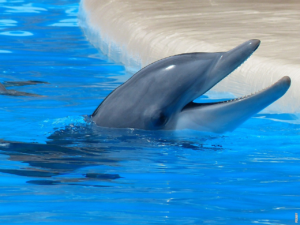The Fascinating World of Mammalian Herds
Living in herds, or groups, is a common phenomenon among various species of mammals. From majestic elephants to agile antelopes, many mammals have evolved to thrive in the company of others. But why do they choose to live in herds? Let’s explore this intriguing behavior and the advantages it brings.
Strength in Numbers
One of the primary reasons why mammals form herds is the concept of strength in numbers. By living together, these animals enhance their chances of survival against predators. Large herds create an intimidating presence, making it difficult for predators to single out and attack an individual. Safety in numbers is a tried and tested strategy in the animal kingdom.
Effective Defense Mechanisms
In addition to strength in numbers, living in herds also allows mammals to develop effective defense mechanisms. Many herd-living species have evolved cooperative behaviors to protect themselves. For example, when threatened, a herd of gazelles may form a tight circle with their heads facing outward, creating a formidable barrier against predators. This collective defense strategy significantly reduces the risk to each individual.
Improved Foraging Opportunities
Living in herds also presents mammals with improved foraging opportunities. By moving as a group, these animals can cover more ground and locate food sources more efficiently. Some herd-living species even engage in cooperative hunting, where individuals work together to capture prey. This division of labor increases the success rate of obtaining food and ensures the survival of the entire herd.
Social Bonding and Communication
Herds provide mammals with a platform for social bonding and effective communication. Within these groups, individuals engage in various social interactions, such as grooming, playing, and vocalizations. These activities strengthen social bonds and maintain a cohesive group structure. Effective communication within herds is crucial for coordinating group movements, alerting others to dangers, and ensuring the overall well-being of the herd.
Post
Post
Reproduction and Parental Care
For many mammals, herds offer favorable conditions for reproduction and parental care. Living in groups provides individuals with a greater chance to find suitable mates. It also allows for shared parental responsibilities, where multiple individuals contribute to the care and protection of the young. This communal approach to reproduction increases the survival rate of offspring and promotes the overall genetic diversity of the herd.
The Beauty of Mammalian Herds
From the vast herds of wildebeest roaming the African savannah to the tightly knit social groups of dolphins in the ocean, the existence of mammalian herds is a testament to the wonders of nature. The ability to live in harmony with others, leveraging the power of unity, is a remarkable trait exhibited by these animals. So, the next time you encounter a majestic herd of mammals, take a moment to appreciate the beauty and complexity of their social dynamics.



